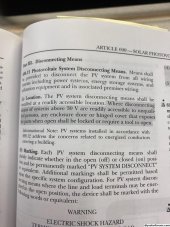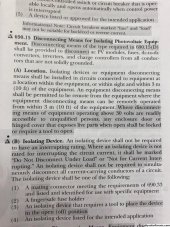new2solar2
New Member
- Joined
- May 14, 2022
- Messages
- 14
If you have a readily accessible rapid shutdown switch located outside of a building, do you still need a DC disconnect switch beside it? Inside, the inverter has a built-in DC Disconnect for the solar panel wires. Technically, the rapid shutdown switch would be safer right, as it reduces the voltage at the panel and wire...as opposed to the dc disconnect which just severs the connection between the panel and inverter.




